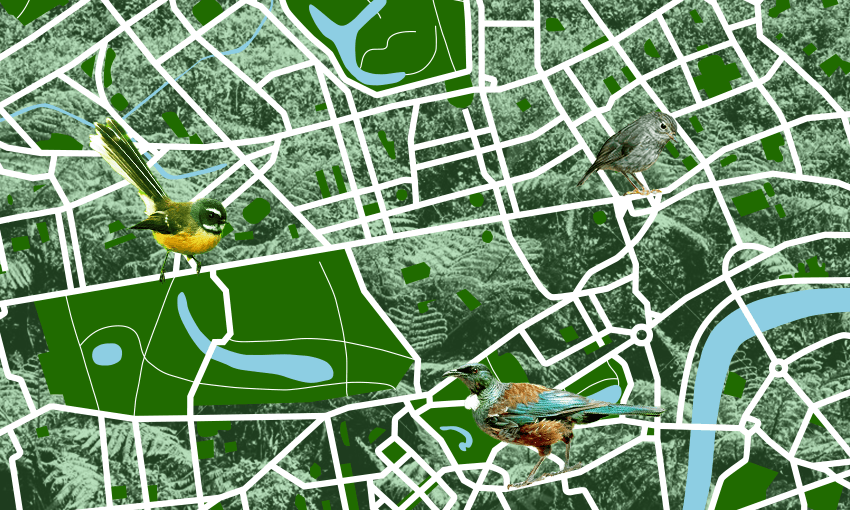Professor Michelle Thompson-Fawcett has focused her career on extending the decolonisation conversation into the processes of urban planning. Now, she’s been appointed to Poutoko Taiea at the University of Otago.
Entwining Indigenous knowledge, histories, values, and presence into the settler-colonial cities of Aotearoa New Zealand is at the heart of what Professor Michelle Thompson-Fawcett (Ngāti Whātua) does. It was her early life in South and Central Auckland, particularly events surrounding Takaparawhau, and the 506-day occupation of land overlooking Auckland’s Waitematā Harbour in the late 1970s, that laid the foundation for her career.
“I was a school child living less than 2km away from all this activity as it took place. It epitomised the fraught, enduring, haunting history of the land around the Ōrākei/Ōkahu Bay area, telling a damning story about how the ‘City of Auckland’ was fashioned, and has been reproduced ever since,” says Thompson-Fawcett.
“It seemed to me that the ongoing politics of place, and power injustices linked to the control of space were among the most important issues you could seek to unveil and repair in our society,” Thompson-Fawcett says.
Exposure to this large-scale Indigenous-led protest movement in New Zealand’s largest city grew Thompson-Fawcett’s understanding of the importance of place in the maintenance of Māori identity in urban areas. Revealing the power relations evident in the practices surrounding design and space, and then envisioning transformation that facilitates Māori aspirations of decolonisation and tino rangatiratanga in this space is what she’s dedicated her time to since.
“For me, Indigenous-led urban planning and development means working towards a built environment that activates Indigenous knowledge and practices, acknowledges the unique histories and presence of Indigenous peoples in locations that are now urban spaces, and respects the relationships between people, land, and communities,” she says.
Today, Indigenous futurity is at the heart of Thompson-Fawcett’s work. Keeping herself busy, the professor in the School of Geography is also currently the associate dean (Māori) in the Division of Humanities, and leader of the Ngā Pae o te Māramatanga “Toitū he Kāinga: Healthy Environmental Relationships in Urban Settings” research programme.
“The built environment is not just about physical spaces, it’s also about cultural spaces, and we need to create places that allow for the expression of Māori culture,” Thompson-Fawcett says “for example, urban environments that enable our rangatahi to speak their language, practise their tikanga, and be Māori in the city.”
Acknowledging the troubled past and present of Aotearoa New Zealand, Thompson-Fawcett believes that Indigenous-led urban planning and design has the potential to play a part in healing that trauma by honouring Indigenous identities, explaining: “I’m talking about embracing Indigenous aspirations from the past, present and future, and really envisioning how we can create opportunities that celebrate Indigenous cultures and histories, and weave them into the fabric of our cities.”
Recent work by Indigenous designers and planners has been delivering places in urban areas “where Indigenous people can see themselves, their narratives, and recognise they belong,” she says. The Tāmaki Makaurau Auckland rail system is one example. The redevelopment of the City’s railway stations incorporates te ao Māori in the design. Using culturally significant, locationally-specific themes connected to movement by waka, navigation via stars, the flow of waterways, local volcanic māunga and more, the new development reflects the journey of those travelling through the city.
Another example is the progress taking place in the city of Ōtautahi Christchurch, in response to post-earthquake reconstruction of the central area. The redevelopment of Te Papa Ōtākaro/the Avon River Precinct demonstrates the centrality of the river to both Māori and subsequent settlers. Building on the Indigenous values of the river as a food source has been a major focus. A reinvigorated two kilometre stretch of the waterway and its banks now incorporates an integrated cultural narrative along this shared public space.
“Such achievements signpost the many ways that the wellbeing of Indigenous peoples in colonised locations might be envisaged as part of urban design, planning, decision-taking and governance processes.”
She believes that real change requires education as well as advocacy, and her role as poutoko taiea at the University of Otago allows her to work with students who are up and coming urban and planning professionals and leaders. “It was the potential of teaching a decolonising and indigenising ethic that placed me in the University,” Thompson-Fawcett says. She stresses the need for urban and planning professionals to understand the history of colonisation in Aotearoa New Zealand and recognise the critical importance of the role of tangata whenua in decision-making processes.
“When you’re teaching students who are going to be city makers, it’s really important that they understand the context of Aotearoa, they understand the histories of colonisation, and they understand the importance of working in partnership with Māori and having a really strong, committed and ethical practice around that,” she says.
Thompson-Fawcett’s work has made significant contributions to indigenous-led urban planning and decolonisation in Aotearoa New Zealand. Her experiences growing up in South and Central Auckland and working with iwi and hapū inspired a commitment to incorporating Indigenous values in urban planning, one which she is passing on to those entering the field.
Through her various roles, Thompson-Fawcett is inspiring urban planning professionals to recognise the importance of Indigenous-led planning and design, and weaving Indigenous knowledge, histories, values and presence into the fabric of our cities.





